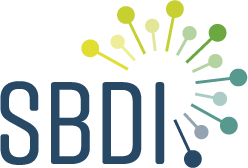R support
R is the most commonly used computing environment for biodiversity and ecosystems research. Install the SBDI4R package, and you can easily search and download SBDI data directly from your own R environment. You can then conveniently analyze and visualize the data using SBDI tools or any other tools provided by the R community. If you are new to R, we offer help and training in using the R language and its packages for biodiversity research.
What is R?
R is a powerful command-line environment that you can use for statistical analyses and visualization. You can use it interactively by typing in short commands, or you can write short programs to automate more complex tasks. R is open-source software developed by a very active community of researchers and programmers. The basic functionality can easily be extended by installing additional packages. The existing packages cover most statistical analysis and visualization methods used by scientists today.
See the R website for more information and instructions on how to install R on your computer. Numerous books and web sites provide introductions to R, R tutorials, and R help. It is popular to use R through R Studio. With R Studio you can write and debug R programs and manage R packages efficiently.
SBDI offers help and training in using R. For more information, please take a look at our comprehensive course program.
R and biodiversity
The R community develops many tools of interest to SBDI users. For instance, the rOpenSci initiative focuses on providing R packages for open and reproducible research using shared data, and biodiversity research is one of their target areas. Search their packages for “biodiversity” to get an up-to-date list of relevant tools. Examples of rOpenSci packages include rgbif (an interface to the GBIF API), bold (an interface to the BOLD systems API), mapr (visualizing species occurrence data), and taxize (access to taxonomic information from around the web).
Access SBDI through R
The Living Atlases community develops several R packages for accessing data and tools in the Living Atlas platform. The core package is galah, which is focused on the Australian instance of the platform, Atlas of Living Australia. Read more about the galah package.
SBDI provides its own R package, sbdi4r2. Sbdi4r2 is a wrapper around galah package. By default, it uses the SBDI data and services, but it can be modified to fetch data from any Living Atlas instance. Like many other R packages, sbdi4r2 is developed on GitHub, where the source code and documentation can be accessed. If you are a proficient R user, please join us in developing sbdi4r2 further!
If you are interested in analyzing data from other countries, you can do this by configuring galah to use a specific country’s Atlas. Some other Living Atlases hubs maintain their own packages, with added country-specific functionality that you can access through their R packages.
